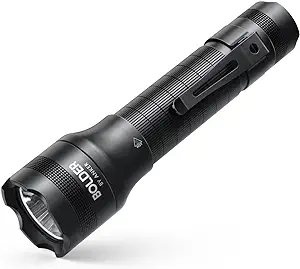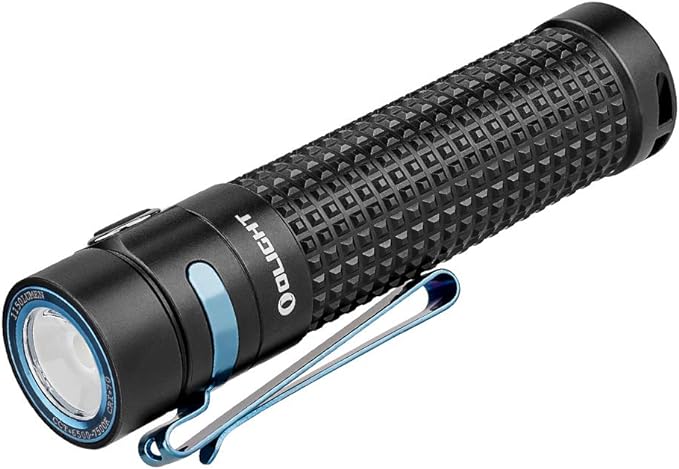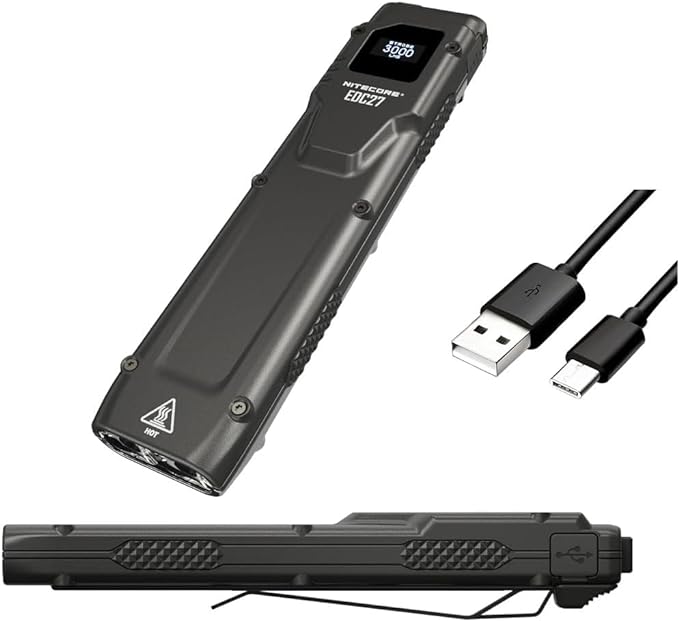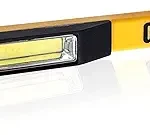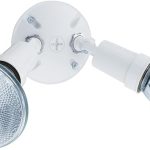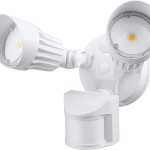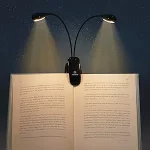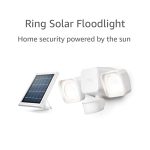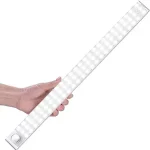When it comes to tackling the great outdoors or working in the dark, you need a reliable flashlight that won’t let you down. You’re likely tired of disposable batteries and the environmental waste they generate. That’s why you’re looking for a rechargeable flashlight that’s up to the task. You’ve come to the right place. We’ve narrowed down the options to the top four rechargeable flashlights that excel with regard to build quality, beam performance, and convenience. But which one will reign supreme?
Contents
- Lighting Ever LED Camping Lantern Rechargeable
- Anker Rechargeable Bolder LC40 Flashlight
- OLIGHT S2R II EDC Flashlight
- Nitecore EDC27 Rechargeable Flashlight
- Factors to Consider When Choosing Rechargeable Flashlights
- Frequently Asked Questions
- How Long Do Rechargeable Flashlights Typically Hold Their Charge?
- Can I Use Any USB Charger to Recharge My Flashlight?
- Do Rechargeable Flashlights Have a Limited Number of Recharge Cycles?
- Are Rechargeable Flashlights More Expensive Than Disposable Ones?
- Can I Replace the Rechargeable Batteries in My Flashlight?
- Conclusion
Lighting Ever LED Camping Lantern Rechargeable
The Lighting Ever LED Camping Lantern Rechargeable is an excellent choice for outdoor enthusiasts looking for a reliable and versatile lighting solution.
It offers a remarkable 500LM maximum brightness and 5 light modes to suit your needs.
The lantern’s durability is impressive, with a rugged build and IPX4 waterproof rating, making it perfect for camping trips or backyard gatherings.
The lantern’s 2600mAh power bank also allows you to charge your devices on the go.
With a comfortable carrying handle and 2 hooks for hanging, you can take this lantern anywhere.
The USB rechargeable design with an included cable makes it easy to power up whenever you need to.
Best For: Outdoor enthusiasts, campers, and backyard gathering hosts who need a reliable and versatile lighting solution.
Pros:
- Offers 500LM maximum brightness and 5 light modes to suit different needs
- Durable and rugged build with IPX4 waterproof rating for outdoor use
- Features a 2600mAh power bank for charging devices on the go
Cons:
- No specific information on the warranty period is provided
- The lantern’s weight and dimensions may be a concern for backpackers or minimalist campers
- The 4.5-hour battery life in 180-degree mode may not be sufficient for extended camping trips
Anker Rechargeable Bolder LC40 Flashlight
The Anker Rechargeable Bolder LC40 Flashlight is the best choice for outdoor enthusiasts and professionals seeking a reliable and long-lasting light source, thanks to its impressive 400-lumen Cree LED and 20-hour runtime.
You’ll appreciate its durability, thanks to its IPX5 water-resistant and aluminum body construction.
The flashlight offers five modes – High, Medium, Low, Strobe, and SOS – to adapt to different situations.
The rechargeable 3350mAh battery can be easily topped up via a micro USB cable, and with a lifespan of 50,000 hours, you can rely on this flashlight for years to come.
Weighing only 4.32 ounces, it’s a compact companion for your next adventure.
Best For: Outdoor enthusiasts and professionals seeking a reliable and long-lasting light source.
Pros:
- Bright 400-lumen Cree LED with a lifespan of 50,000 hours
- Durable IPX5 water-resistant and aluminum body construction
- Rechargeable 3350mAh battery with up to 20 hours of runtime
Cons:
- Brightness affected by battery life
- Charging time can be lengthy
- No specific additional features beyond the standard flashlight modes
OLIGHT S2R II EDC Flashlight
The OLIGHT S2R II EDC Flashlight boasts an incredible 1150-lumen output, making it an ideal choice for those who need a reliable and extremely bright light source.
This compact flashlight is packed with features, including a variable-output side switch with a battery indicator, so you’ll always know when it’s time to recharge.
The rechargeable battery is easily topped up using the magnetic charging cable, and the premium beam with the new TIR lens design provides a focused light that reaches an impressive 135 meters.
With its durable aluminum construction and waterproof design, this flashlight is built to withstand the toughest conditions.
Plus, the dual-direction pocket clip makes it easy to carry with you wherever you go.
Best For: Outdoor enthusiasts, first responders, and anyone in need of a reliable and extremely bright light source.
Pros:
- Extremely bright 1150-lumen output
- Durable and waterproof aluminum construction
- Convenient rechargeable battery with magnetic charging cable
Cons:
- Magnetic charging cable is thin and proprietary
- Some reviewers reported minor drawbacks, such as a faulty product (although this was an isolated incident)
- No additional features or accessories beyond the included items
Nitecore EDC27 Rechargeable Flashlight
The Nitecore EDC27 Rechargeable Flashlight is a reliable and powerful lighting solution for outdoor enthusiasts and professionals.
It boasts an impressive 3,000-lumen max output and 209-meter beam distance, making it suitable for a variety of applications.
The flashlight’s performance is long-lasting, with a max runtime of 36 hours and 7 minutes on a single charge, ensuring it will keep working when you need it most.
The durable aluminum construction and IP54 rating guarantee the flashlight can withstand harsh environments, making it a great choice for use in rugged conditions.
The included lithium-ion battery and USB rechargeable feature make it convenient to use on the go, and the high color temperature of 6500K and SST40 x2 LED provide a bright, white light that illuminates even the darkest spaces.
Weighing just 4.25 ounces, this compact flashlight is easy to carry and store, making it a great addition to any outdoor or professional kit.
Best For: Outdoor enthusiasts and professionals who require a reliable and powerful lighting solution for their daily activities.
Pros:
- High max output of 3,000 lumens and 209-meter beam distance for excellent lighting performance.
- Long-lasting performance with a max runtime of 36 hours and 7 minutes on a single charge.
- Durable aluminum construction and IP54 rating guarantee it can withstand harsh environments.
Cons:
- Currently, there is only one negative review, which may not be representative of the product’s overall quality.
- The product’s weight of 4.25 ounces may be a concern for some users who prefer extremely lightweight flashlights.
- The product’s color temperature of 6500K may be too cool for some users who prefer warmer light tones.
Factors to Consider When Choosing Rechargeable Flashlights
When choosing a rechargeable flashlight, you’ll want to guarantee several key factors to confirm you get the right one for your needs.
You’ll need to ponder the power source options, such as USB rechargeability or battery swaps, as well as the light output modes and battery life expectancy.
Power Source Options
The type of battery powering your rechargeable flashlight – lithium-ion, nickel-metal hydride, or nickel-cadmium – significantly impacts its overall performance and environmental footprint.
Lithium-ion batteries offer high energy density and long cycle life, making them a popular choice for rechargeable flashlights. Some flashlights may use nickel-metal hydride or nickel-cadmium batteries, but these are less common due to environmental concerns and performance limitations.
When it comes to charging, micro-USB or USB-C ports are commonly used, allowing you to conveniently charge your flashlight from a computer, wall adapter, or power bank. Some models may even feature wireless charging capabilities, such as Qi-compatible charging pads, for added convenience.
The capacity of the battery, measured in milliampere-hours (mAh), affects the runtime of the flashlight, with higher capacities generally providing longer battery life. Consider your needs and preferences when evaluating power source options, and choose a flashlight that meets your requirements for performance, convenience, and environmental sustainability.
Light Output Modes
Rechargeable flashlights typically offer multiple light output modes, which allow you to adjust the beam’s intensity and style to suit various tasks and environments.
These modes can include a high-beam mode for maximum brightness, a low-beam mode for energy efficiency, and sometimes even a strobe or SOS mode for signaling.
Some flashlights may also feature a red light mode to preserve your night vision.
When choosing a rechargeable flashlight, consider the types of tasks you’ll be using it for and the light output modes that will be most useful to you.
If you’ll be using your flashlight for camping or hiking, a high-beam mode may be essential for traversing in the dark.
On the other hand, if you’ll be using your flashlight for everyday tasks around the house, a low-beam mode may be sufficient.
Consider the flexibility and adaptability of the light output modes when selecting a rechargeable flashlight that meets your needs.
Battery Life Expectancy
With a rechargeable flashlight, understanding the factors that influence battery life expectancy is essential to choosing a reliable light source that meets your needs.
You’ll want to think about the type of battery used, as lithium-ion batteries generally outlast others. The battery’s capacity, measured in mAh, is also vital, as higher capacities usually translate to longer battery life.
When choosing a rechargeable flashlight, you should also ponder how you’ll be using it.
If you plan to use the flashlight at its brightest setting, you’ll drain the battery faster. On the other hand, if you can get by with a lower brightness level, you’ll get more life out of your battery.
The quality of the battery and charging system also plays a significant role in determining battery life expectancy. Look for high-quality components to guarantee you get the most out of your flashlight.
Some flashlights can maintain a consistent brightness level until the battery is depleted, while others may experience a gradual decline in brightness as the battery drains.
Durability Features
When shopping for a reliable rechargeable flashlight, you need a durable device that can withstand rough handling and harsh environments, which is where durability features come into play.
You want a flashlight that can resist water and dust, so look for a high IPX rating, such as IPX4 or IPX5. The material used in the flashlight’s construction also matters; aluminum or high-quality plastics can make a big difference in its ability to withstand rough handling. The weight and dimensions of the flashlight also play a role, with heavier and larger lights potentially being more durable than lighter and smaller ones.
The type of switch used in the flashlight is another important factor to bear in mind. Some switches, like button or tail switches, are more prone to failure than others.
Additionally, the battery type and charging mechanism can impact durability. Rechargeable batteries and magnetic charging cables may be more durable than disposable batteries and micro-USB cables.
Portability Factors
Frequently, the portability of a rechargeable flashlight is a crucial consideration, as it directly impacts how easily you can take it with you on outdoor adventures or daily tasks.
You want a light that’s compact, lightweight, and easy to carry, so you can stash it in your backpack, purse, or even pocket. Look for flashlights with a streamlined design, as they’ll be more comfortable to hold and less likely to get in the way.
Another key factor is the weight of the flashlight. If you plan to carry it for extended periods, a lighter option will be more comfortable.
You should also consider the size of the battery, as larger batteries can add bulk to the flashlight. Additionally, think about the type of clip or holster the flashlight has. A sturdy clip or holster will make it easier to attach the light to your belt or backpack, freeing up your hands for other tasks.
Ultimately, you want a rechargeable flashlight that’s easy to carry and won’t weigh you down. By considering these portability factors, you’ll find a light that’s perfect for your needs and adventures.
Frequently Asked Questions
How Long Do Rechargeable Flashlights Typically Hold Their Charge?
You’re wondering how long rechargeable flashlights typically hold their charge? Generally, they can last anywhere from a few hours to several days or even weeks, depending on the type, usage, and quality of the flashlight and its battery.
Can I Use Any USB Charger to Recharge My Flashlight?
“Congratulations, you’ve won the award for most reckless charging habits! But seriously, no, you can’t use just any USB charger to recharge your flashlight – make sure it’s compatible with your light’s voltage and current requirements.”
Do Rechargeable Flashlights Have a Limited Number of Recharge Cycles?
You’re wondering if rechargeable flashlights have a limited number of recharge cycles. Yes, they do! Most batteries can handle around 300-500 recharge cycles before capacity starts to degrade, depending on the type and quality of the battery.
Are Rechargeable Flashlights More Expensive Than Disposable Ones?
You weigh the cost, and it’s true, rechargeable flashlights often come with a higher upfront price tag than disposable ones. However, you’ll save in the long run, as you won’t constantly replace batteries.
Can I Replace the Rechargeable Batteries in My Flashlight?
You’re wondering if you can replace the rechargeable batteries in your flashlight. Yes, you can! Most flashlights allow you to swap out batteries, but check your manual to verify compatibility and proper procedure.
Conclusion
You’ve got the best of the best in your hands – the crème de la crème of rechargeable flashlights.
Like a trusty compass, these flashlights will guide you through the darkest of nights, illuminating your path like a beacon in the wilderness.
With their rugged builds and premium beam quality, you’ll be shining bright like a lighthouse on a rocky shore.

